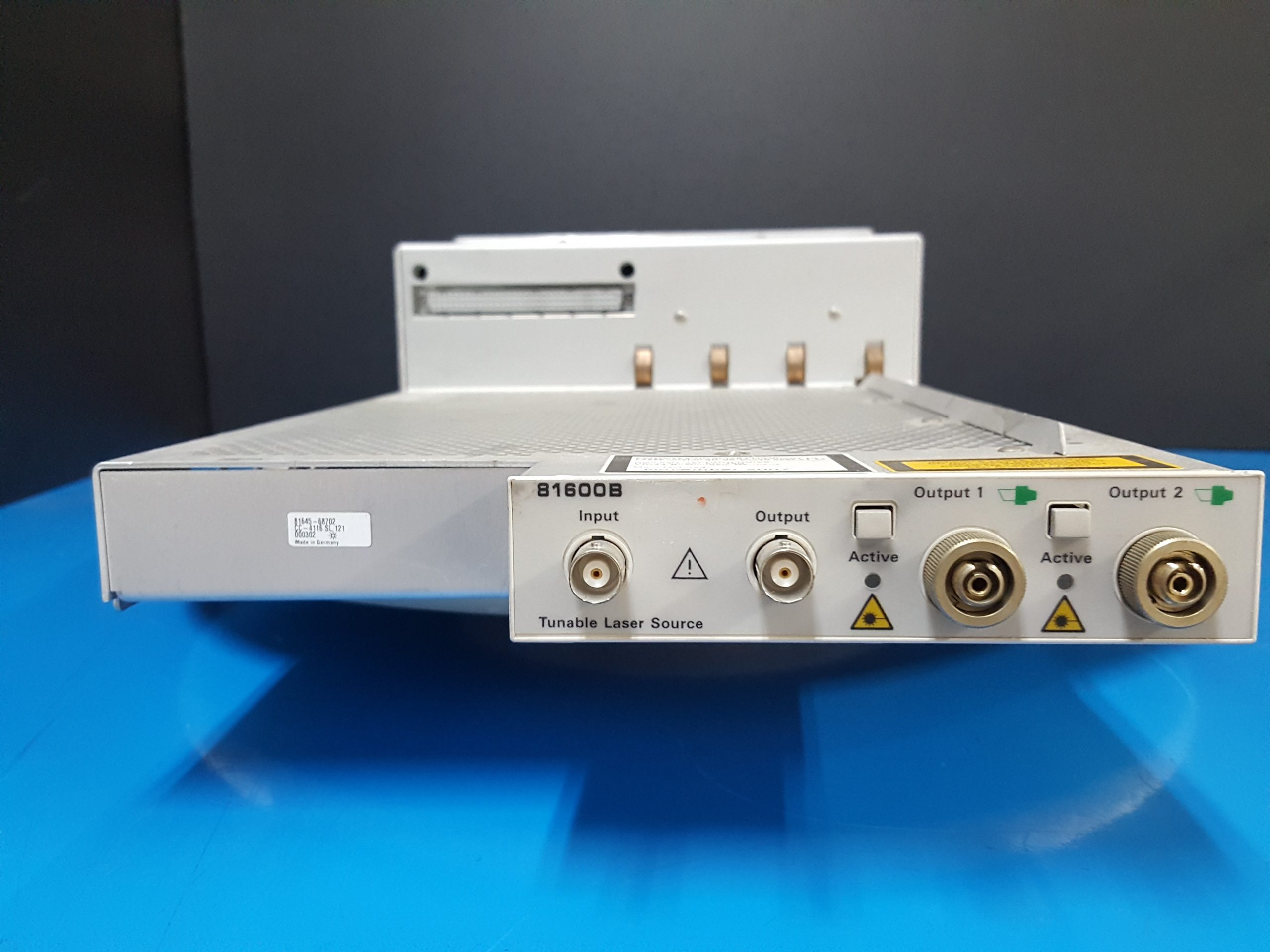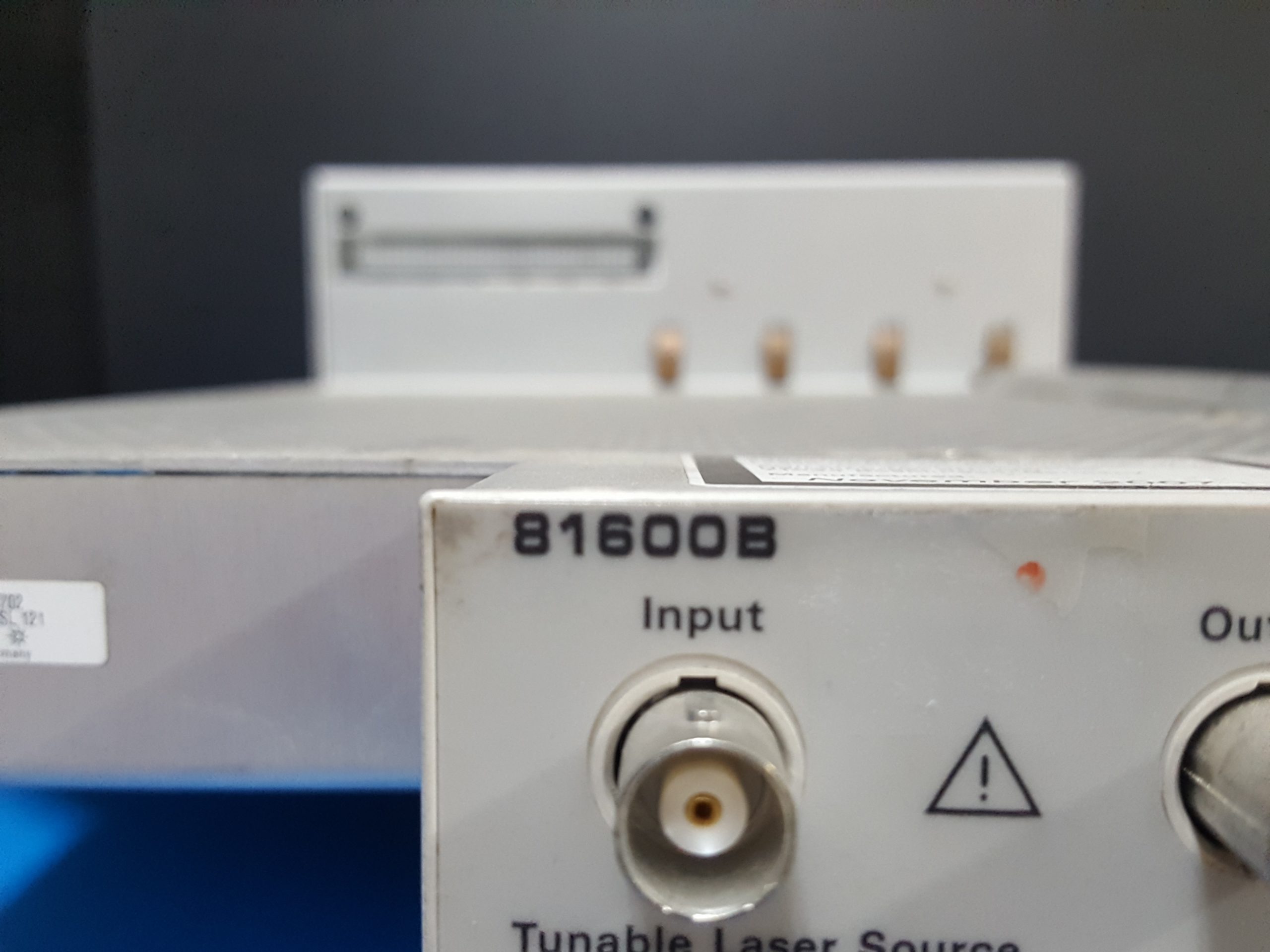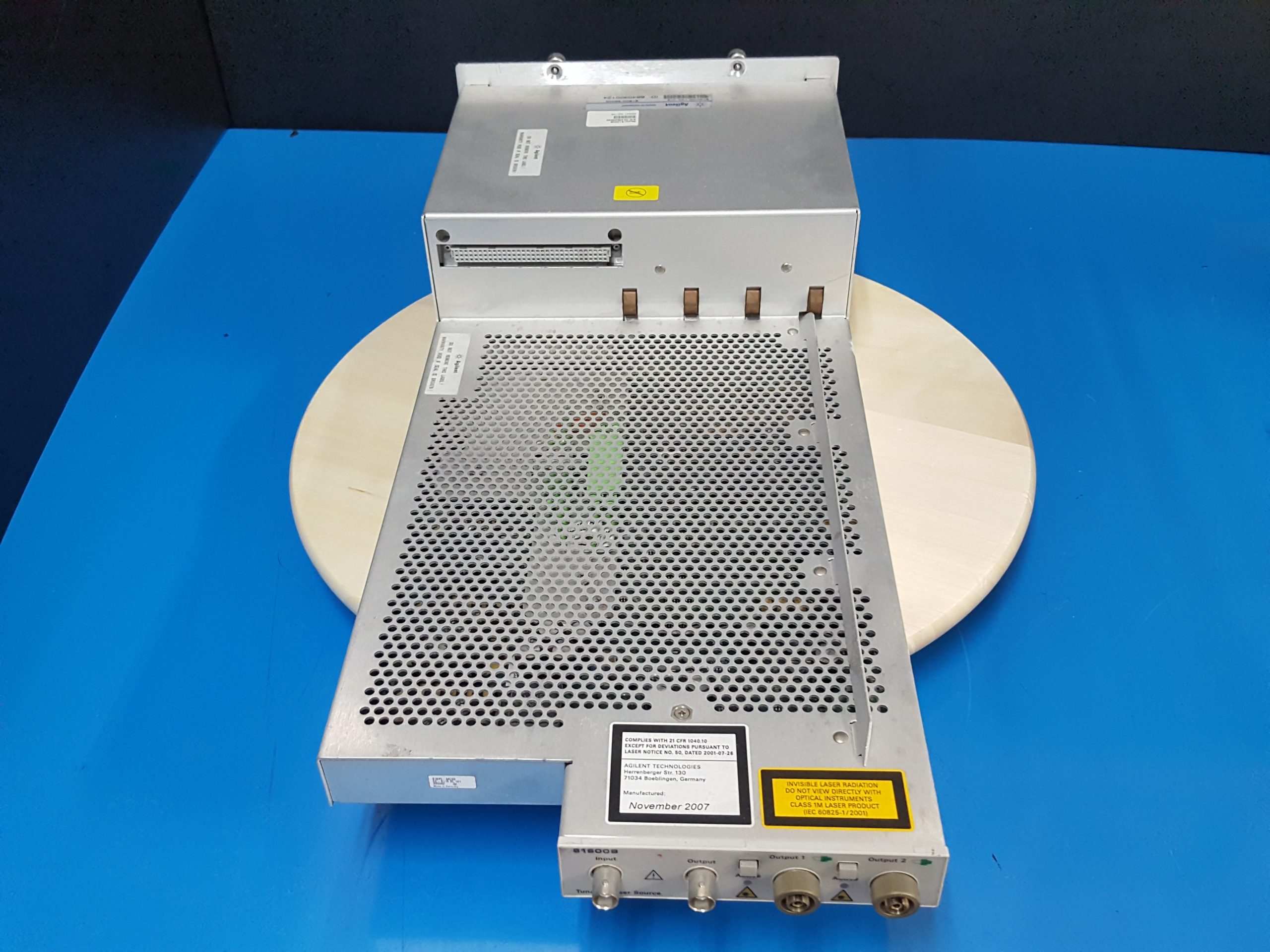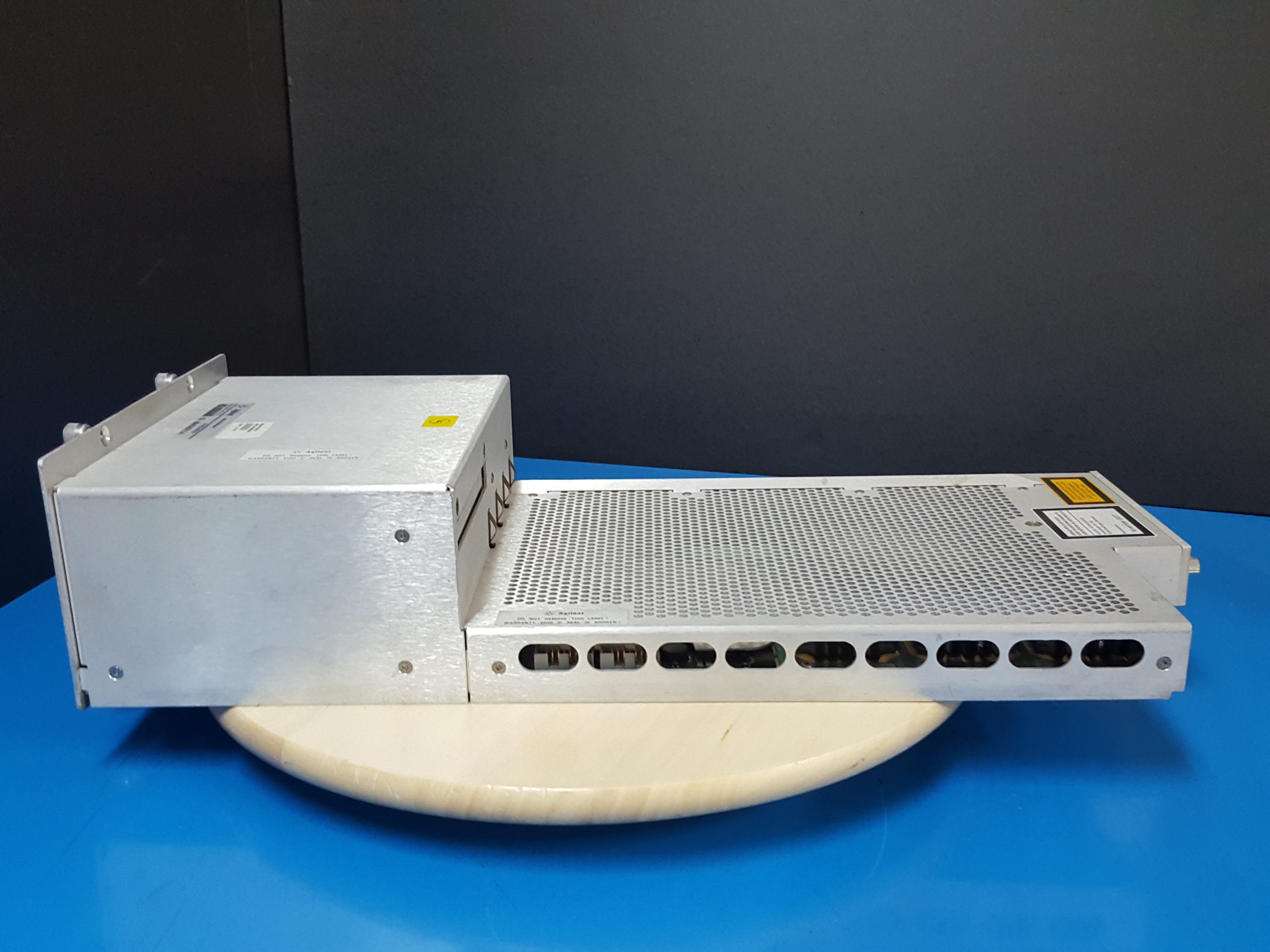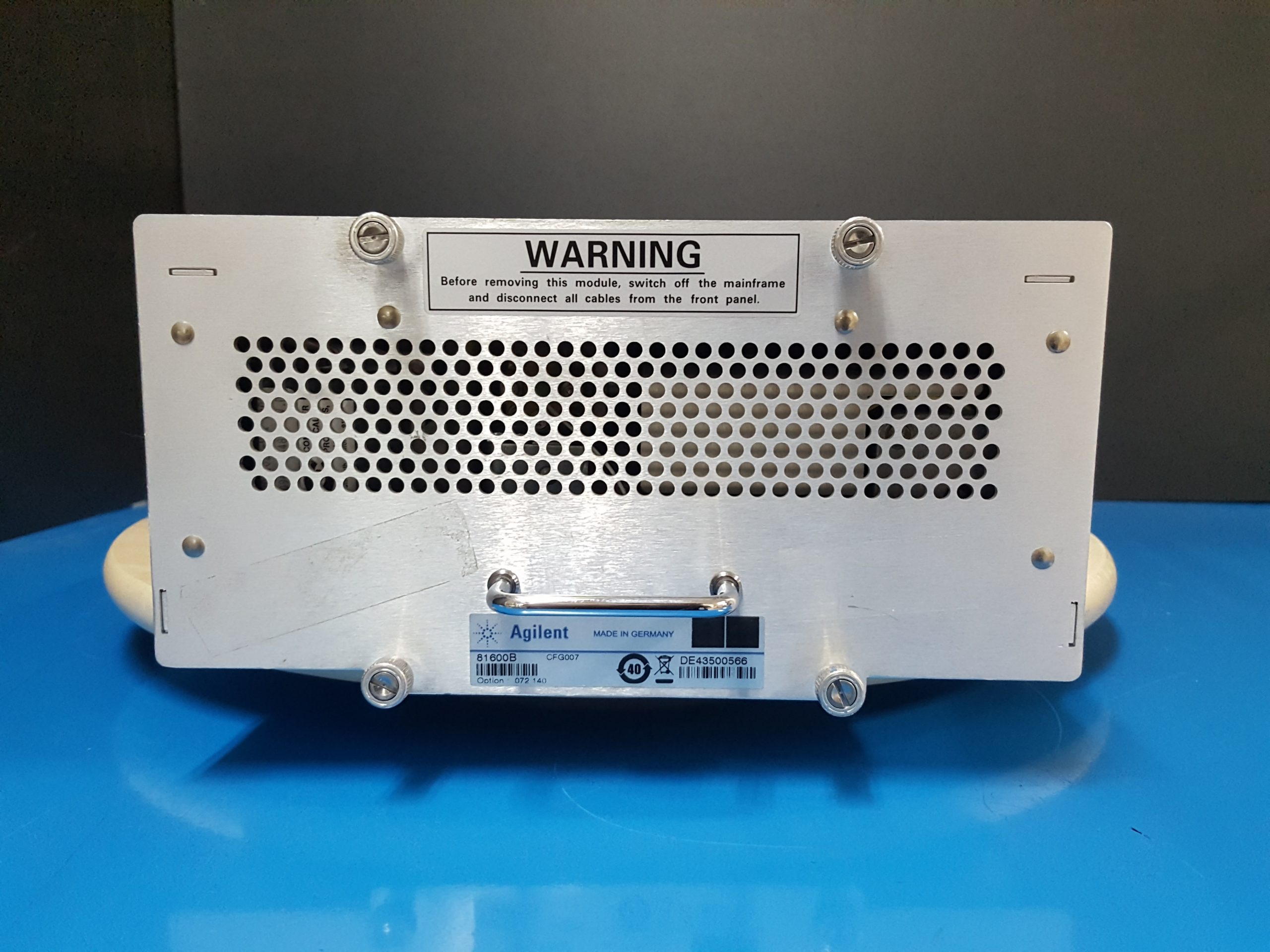리퍼비시 계측기
리퍼비시 계측기
81600B-140
- Model81600B
- MakerAgilent
- DescriptionTunable Laser Source
- Option140 072
- Rental문의요망
- Stock문의요망
- High optical output power up to + 9 dBm
- Highest measurement range through low spontaneous source emission (low SSE), Signal to SSE Ratio >70 dB/nm
- Variable sweep speed up to 80nm/s
- Wide tuning range units cover all transmission bands: 1260nm-1640nm
- Built-in high performance 60dB attenuator
- Built-in wavemeter with excellent wavelength-accuracy +/-3.6pm
키사이트 81600B 튜너블 레이저 소스 제품군은 시판 제품 중 가장 용도가 다양하고 성능이 우수한 튜너블 레이저 소스들로 구성되어 있습니다. 이를 사용하여 WDM 개발자와 제조업체는 테스트 비용을 크게 줄이고 빠른 투자 수익을 거두어 들일 수 있습니다. 키사이트 81600B 제품군은 전체 파장 범위에 걸쳐 빠르고 정확한 스위프와 스위프 조건하에서도 지정된 정확도로 고급 광학 부품의 특성을 가장 정확하게 분석할 수 있습니다.
81600B opt. 140 Tunable Laser Source, 1370 nm – 1495 nm, low SSE
Agilent 81600B opt. 140 2.4
Wavelength range : 1370 nm to 1495 nm
Wavelength resolution 0.1 pm, 15 MHz at 1450 nm
Mode-hop free tunability full wavelength range
Maximum sweep speed 80 nm/s (1372 nm – 1495 nm)
Stepped mode Continuous sweep mode (typ.)
at 5 nm/s at 40 nm/s at 80 nm/s
Absolute wavelength accuracy [1] ±10 pm, typ. ±3.6 pm ±4.0 pm ±4.6 pm ±6.1 pm
Relative wavelength accuracy [1] ±5 pm, typ. ±2 pm ±2.4 pm ±2.8 pm ±4.0 pm
Wavelength repeatability ±0.8 pm, typ. ±0.5 pm ±0.3 pm ±0.4 pm ±0.7 pm
Wavelength stability [4] (typ.) ≤ ±1 pm, 24 hours
Linewidth (typ.), coherence control off
Effective linewidth (typ.), coherence ctrl. on
100 kHz
> 50 MHz (1430 nm – 1480 nm, at max. constant output power)
Output 1 (low SSE) Output 2 (high power)
Maximum output power
(continuous power during sweep)
≥ –4.5 dBm peak (typ.)
≥ –5 dBm (1430 nm – 1480 nm)
≥ –7 dBm (1420 nm – 1480 nm)
≥ –13 dBm (1370 nm –1495 nm)
≥ +5.5 dBm peak (typ.)
≥ +5 dBm (1430 nm –1480 nm)
≥ +3 dBm (1420 nm – 1480 nm)
≥ –3 dBm (1370 nm – 1495 nm)
Attenuation max 60 dB
Power repeatability (typ.) ±0.003 dB
Power stability [4] ±0.01 dB, 1 hour (1420 nm – 1495 nm)
typ. ±0.01 dB, 1 hour (1370 nm – 1420 nm)
typ. ±0.03 dB, 24 hours
Power linearity ±0.1 dB (1420 nm – 1495nm)
typ. ±0.1 dB (1370 nm – 1420 nm)
±0.3 dB (1420 nm – 1495 nm)
typ. ±0.3 dB (1370 nm – 1420 nm)
Power flatness versus wavelength ±0.2 dB,
typ. ±0.1 dB (1420 nm – 1495 nm)
typ. ±0.2 dB (1370 nm – 1420 nm)
±0.3 dB,
typ. ±0.2 dB (1420 nm – 1495 nm)
typ. ±0.3 dB (1370 nm – 1420 nm)
Continuous sweep mode [3]
at 5 nm/s at 40 nm/s at 80 nm/s
Dynamic power reproducibility (typ.) ±0.005 dB ±0.01 dB ±0.015 dB
Dynamic relative power flatness (typ.) ±0.01 dB ±0.015 dB ±0.03 dB
Side-mode suppression ratio (typ.) [2] ≥ 40 dB (1430 nm – 1480 nm)
Output 1 (low SSE) Output 2 (high power)
Signal to source
spontaneous emission ratio [2]
≥ 63 dB/nm (1430 nm –1480 nm)
≥ 73 dB/0.1 nm
(typ., 1430 nm – 1480 nm)
≥ 61 dB/nm (1420 nm – 1480 nm)
≥ 55 dB/nm (typ., 1370 nm – 1495 nm)
≥ 42 dB/nm (1430 nm – 1480 nm)
≥ 52 dB/0.1 nm
(typ., 1430 nm – 1480 nm)
≥ 40 dB/nm (1420 nm – 1480 nm)
≥ 35 dB/nm (typ., 1370 nm – 1495 nm)
Signal to total source
spontaneous emission ratio [2]
≥ 60 dB (1430 nm – 1480 nm)
≥ 58 dB (1420 nm – 1480 nm)
≥ 53 dB (typ., 1370 nm – 1495 nm)
≥ 28 dB (typ., 1430 nm – 1480 nm)
Relative intensity noise (RIN) (0.1 – 6 GHz) (typ.) [2]
–145 dB/Hz (1430 nm – 1480 nm)81600B opt. 140 Tunable Laser Source, 1370 nm – 1495 nm, low SSE
Agilent 81600B opt. 140 2.4
Wavelength range 1370 nm to 1495 nm
Wavelength resolution 0.1 pm, 15 MHz at 1450 nm
Mode-hop free tunability full wavelength range
Maximum sweep speed 80 nm/s (1372 nm – 1495 nm)
Stepped mode Continuous sweep mode (typ.)
at 5 nm/s at 40 nm/s at 80 nm/s
Absolute wavelength accuracy [1] ±10 pm, typ. ±3.6 pm ±4.0 pm ±4.6 pm ±6.1 pm
Relative wavelength accuracy [1] ±5 pm, typ. ±2 pm ±2.4 pm ±2.8 pm ±4.0 pm
Wavelength repeatability ±0.8 pm, typ. ±0.5 pm ±0.3 pm ±0.4 pm ±0.7 pm
Wavelength stability [4] (typ.) ≤ ±1 pm, 24 hours
Linewidth (typ.), coherence control off
Effective linewidth (typ.), coherence ctrl. on
100 kHz
> 50 MHz (1430 nm – 1480 nm, at max. constant output power)
Output 1 (low SSE) Output 2 (high power)
Maximum output power (continuous power during sweep)
≥ –4.5 dBm peak (typ.)
≥ –5 dBm (1430 nm – 1480 nm)
≥ –7 dBm (1420 nm – 1480 nm)
≥ –13 dBm (1370 nm –1495 nm)
≥ +5.5 dBm peak (typ.)
≥ +5 dBm (1430 nm –1480 nm)
≥ +3 dBm (1420 nm – 1480 nm)
≥ –3 dBm (1370 nm – 1495 nm)
Attenuation max 60 dB
Power repeatability (typ.) ±0.003 dB
Power stability [4] ±0.01 dB, 1 hour (1420 nm – 1495 nm)
typ. ±0.01 dB, 1 hour (1370 nm – 1420 nm)
typ. ±0.03 dB, 24 hours
Power linearity ±0.1 dB (1420 nm – 1495nm)
typ. ±0.1 dB (1370 nm – 1420 nm)
±0.3 dB (1420 nm – 1495 nm)
typ. ±0.3 dB (1370 nm – 1420 nm)
Power flatness versus wavelength ±0.2 dB,
typ. ±0.1 dB (1420 nm – 1495 nm)
typ. ±0.2 dB (1370 nm – 1420 nm)
±0.3 dB,
typ. ±0.2 dB (1420 nm – 1495 nm)
typ. ±0.3 dB (1370 nm – 1420 nm)
Continuous sweep mode [3]
at 5 nm/s at 40 nm/s at 80 nm/s
Dynamic power reproducibility (typ.) ±0.005 dB ±0.01 dB ±0.015 dB
Dynamic relative power flatness (typ.) ±0.01 dB ±0.015 dB ±0.03 dB
Side-mode suppression ratio (typ.) [2] ≥ 40 dB (1430 nm – 1480 nm)
Output 1 (low SSE) Output 2 (high power)
Signal to source
spontaneous emission ratio [2]
≥ 63 dB/nm (1430 nm –1480 nm)
≥ 73 dB/0.1 nm
(typ., 1430 nm – 1480 nm)
≥ 61 dB/nm (1420 nm – 1480 nm)
≥ 55 dB/nm (typ., 1370 nm – 1495 nm)
≥ 42 dB/nm (1430 nm – 1480 nm)
≥ 52 dB/0.1 nm
(typ., 1430 nm – 1480 nm)
≥ 40 dB/nm (1420 nm – 1480 nm)
≥ 35 dB/nm (typ., 1370 nm – 1495 nm)
Signal to total source
spontaneous emission ratio [2]
≥ 60 dB (1430 nm – 1480 nm)
≥ 58 dB (1420 nm – 1480 nm)
≥ 53 dB (typ., 1370 nm – 1495 nm)
≥ 28 dB (typ., 1430 nm – 1480 nm)
Relative intensity noise (RIN) (0.1 – 6 GHz) (typ.) [2]
–145 dB/Hz (1430 nm – 1480 nm)
Option 140 : 1370 nm – 1495 nm, low SSE
